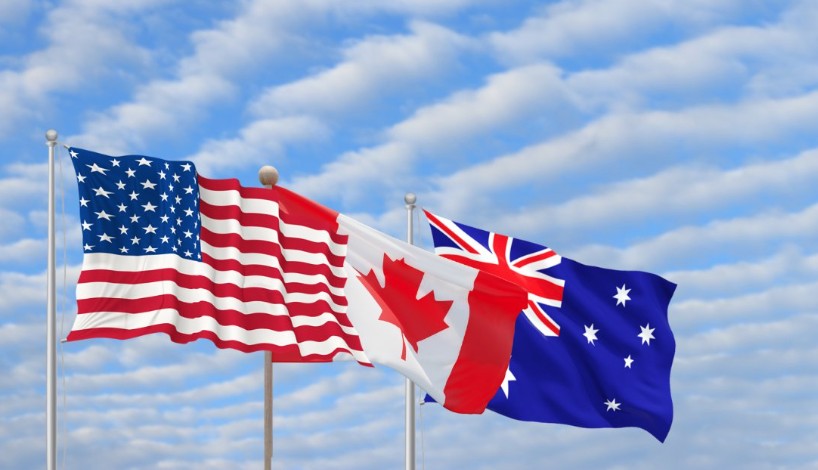
Visa exemptions for certain nationalities rei...
read more

Latest reports by the Ministry of Agriculture, Livestock and Supply (MAPA) confirm that the production and exports of Brazilian agricultural products have not been adversely affected since the novel coronavirus arrived in the country a couple of months ago. The prospects for additional record exports of certain commodities, especially soya beans, are promising, despite the ongoing outbreak and the long-term uncertainties surrounding foreign trade.
Agriproducts keeping foreign trade balance
No significant changes were made to the logistics and output of agriproducts in the context of COVID-19 in Brazilian ports other than the protocols for hygiene, sanitising and physical distancing among port workers. Indeed, some traditional grain ports, such as Paranagua, reached a historical record for soya bean shipments last month, when Brazil heightened restrictive measures on people and businesses. The government has included cargo transportation services on the roster of essential activities; it is taking steps along with traders and operators to prevent disruptions in the circulation of commodities during the pandemic. Figures from the Ministry of Economy’s Foreign Trade Secretariat (SECEX) suggest that, at least for now, efforts to sustain the flow of international trade are paying off.
In March 2020, agribusiness sales reached US$ 9.3 billion, an increase of 13.3% year on. The volume of exports went up 18.8% compared to March last year, with China remaining the leading buyer, followed by the European Community and the United States. Agribusiness imports reached US$ 1.28 billion (+12.3%), resulting in an US$ 8 billion trade balance surplus. Agriproducts such as soya products, animal protein, sugar and coffee covered 48.3% of the foreign sales in the last month.
Producers in highly mechanised plantations maintain activities with a marginal drop in the harvest initially forecast (from 251.9 million metric tonnes down to 251.8 mmt) with a positive outlook for soya bean and corn crops. Animal proteins (beef, poultry and pork) also saw significant growth in sales (almost US$ 1.4 billion, + 12.7%) last month, along with expansion in export volumes and the opening of new markets in the Middle East and Asia.
Soya bean records
Grain exports through traditional Brazilian grain ports are being carried out as usual. Although the cumulative soya bean shipments in the first quarter were slightly lower than in the same period last year, reflecting a late harvest and a drier than usual season, exports remain high. Large volumes were traded in advance, driven by the heated demand for oilseed and unprecedented appreciation of the dollar against the Brazilian real, which lost a third of its value during this year, half of that loss in March.
Soya products (soya bean, oil and meal) were the main agriproducts, with 13.4 mmt sold in March 2020, yielding US$ 4.6 billion (+ 27.5% more than March 2019). Bulk soya bean exports hit record sales (nearly US$ 4 billion, up 31.7% in relation to March 2019) as well as record volumes (11.6 mmt, + 37.7%), with China buying three-quarters of all Brazilian soya beans shipped last month.
Precautions to avoid cargo claims
Brazil is the world’s largest soya bean producer and accounts for half of the global oilseed trade. About three-fourths of the Brazilian soya bean is shipped to China on sea passages that take more than 40 days.
Given the high demand for oilseeds and the slowdown in the workforce in most Chinese grain ports, vessels arriving with Brazilian soya beans are forced to wait at anchorages for much longer than usual before being able to berth and unload the cargo. The extended transit time can negatively affect the outturn condition of the cargo due to self-heating or microbiologic deterioration.
That said, there are a number of precautionary measures that shipmasters, crews and operators can take to prevent or minimise cargo claims, namely:
Production and export forecast
Soya bean production should reach the same good results as last season. The oilseed is expected to produce a record of 122.1 mmt, despite the drought in southern Brazil at the beginning of this season. MAPA and the US Department of Agriculture (USDA) forecast soya bean exports to remain at a steady pace as Brazilian sellers price competitively, taking advantage of a stronger US dollar and the recovery of China’s domestic economy. The forecast for the 2019/2020 oilseed production in Brazil varies between 122 mmt to 124.5 mmt, with export estimates ranging between 75 and 78.5 mmt.
Please read our disclaimer.
Related topics:
Rua Barão de Cotegipe, 443 - Sala 610 - 96200-290 - Rio Grande/RS - Brazil
Telephone +55 53 3233 1500
proinde.riogrande@proinde.com.br
Rua Itororó, 3 - 3rd floor
11010-071 - Santos, SP - Brazil
Telephone +55 13 4009 9550
proinde@proinde.com.br
Av. Rio Branco, 45 - sala 2402
20090-003 - Rio de Janeiro, RJ - Brazil
Telephone +55 21 2253 6145
proinde.rio@proinde.com.br
Rua Professor Elpidio Pimentel, 320 sala 401 - 29065-060 – Vitoria, ES – Brazil
Telephone: +55 27 3337 1178
proinde.vitoria@proinde.com.br
Rua Miguel Calmon, 19 - sala 702 - 40015-010 – Salvador, BA – Brazil
Telephone: +55 71 3242 3384
proinde.salvador@proinde.com.br
Av. Visconde de Jequitinhonha, 209 - sala 402 - 51021-190 - Recife, PE - Brazil
Telephone +55 81 3328 6414
proinde.recife@proinde.com.br
Rua Osvaldo Cruz, 01, Sala 1408
60125-150 – Fortaleza-CE – Brazil
Telephone +55 85 3099 4068
proinde.fortaleza@proinde.com.br
Tv. Joaquim Furtado, Quadra 314, Lote 01, Sala 206 - 68447-000 – Barcarena, PA – Brazil
Telephone +55 91 99393 4252
proinde.belem@proinde.com.br
Av. Dr. Theomario Pinto da Costa, 811 - sala 204 - 69050-055 - Manaus, AM - Brazil
Telephone +55 92 3307-0653
proinde.manaus@proinde.com.br
Rua dos Azulões, Sala 111 - Edifício Office Tower - 65075-060 - São Luis, MA - Brazil
Telephone +55 98 99101-2939
proinde.belem@proinde.com.br